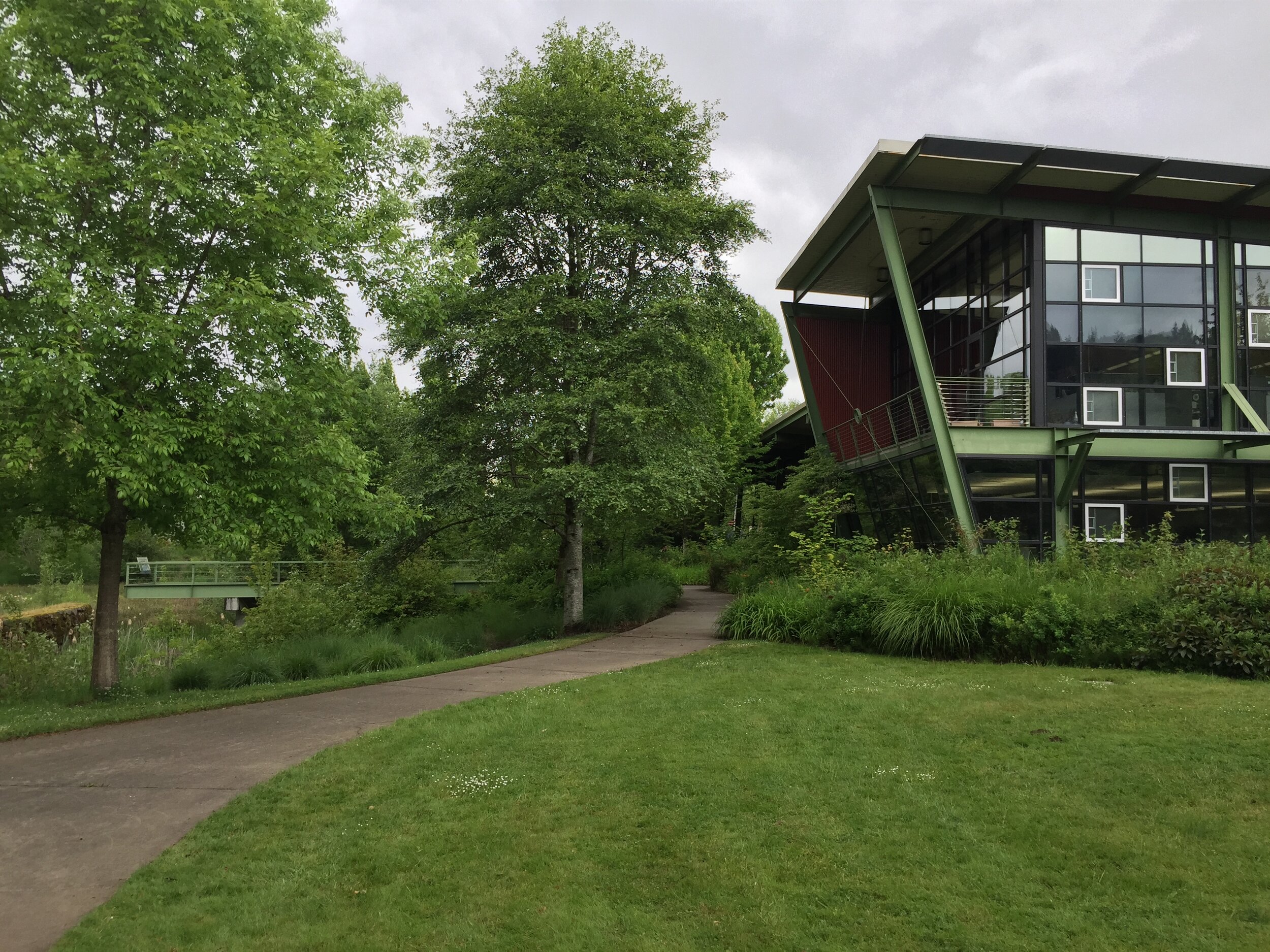Water Pollution Control Lab, Local Icon of Green Infrastructure, Receiving Upgrades
/The WPCL in 2015
The Water Pollution Control Lab (WPCL) is an icon of Portland’s history as a leader in green infrastructure. The lab helps protect water quality in the region and sits near the span of the historic St. John’s Bridge. We’ve been honored to work with some great partners on improvements to the site recently.
The WPCL’s design links the environs with adjacent Cathedral Park and features many stormwater features that were revolutionary for their time. The project’s original team of Murase Associates, Miller Hull Architects, and SERA Architects (for the City of Portland’s Bureau of Environmental Services [BES]) won many awards for the design, including Portland and Seattle AIA awards, a BPA Architecture and Energy Merit Award, and a 1999 ASLA Honor Award.
Carol Mayer-Reed, in a contribution to The American Society of Landscape Architects’ “Landscape Architect’s Guide to Portland, Oregon”, describes the significance of the WPCL’s design:
“The early years of city-mandated stormwater management resulted in single-purpose treatment ponds that were typically the assignment of civil engineers. The engineers designed them to accomplish a single function. With steep, rip-rap sides devoid of vegetation and chain link fences added in the name of safety, these facilities were typically located at the backs of sites due to the resulting poor aesthetics.
Tom Liptan [landscape architect at BES] and Murase's vision for publicly accessible green infrastructure, however, was something different. Murase incorporated natural systems into many of his projects, taking these landscapes to the artistic level seen in the award-winning Water Pollution Control Lab.”
The facility opened in 1997 as “a model for sustainable development… conserving energy with self-dimming fluorescent lights, motion sensitive light switches, and windows that open,” BES says on their website. “The swales, planters and water garden surrounding the building treat stormwater runoff from its roof and parking lot, and from 50 acres of nearby streets and neighborhoods.”
The Pollution Prevention group works out of the facility. They investigate citizen complaints of pollution, test water quality, maintain compliance with permitting requirements, and collaborate with Portland industries to protect clean water.
GreenWorks was honored to lead efforts for a pre-design report for upgrades in 2015, and to join Akana and other team members to further refine the design in 2017. Our work is ongoing.
“The landscape and stormwater features of the WPCL require an upgrade to keep up with evolving best practices and regulations,” Jennifer D’Avanzo, GreenWorks project manager for the project, explained. “The new designs include a greenroof on top of a new building, as well as three stormwater planters on the parking lot to manage stormwater. The three stormwater planters will be used as monitoring planters for BES’s research and development strategies for stormwater. GreenWorks also researched the design and planting palette completed in 1997, to continue tell the story in a way that carries the original intents of the design forward.”




